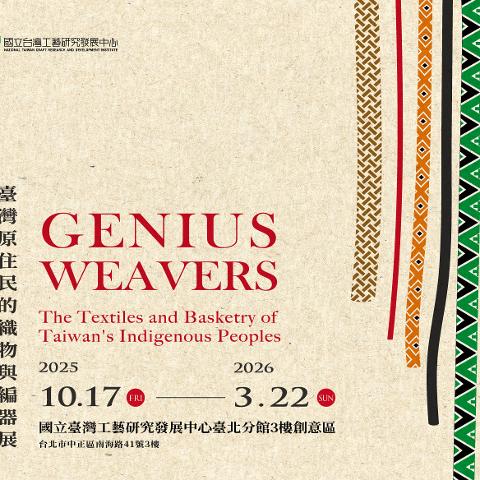
參展介紹
光織屋─巴特虹岸手作坊
光織屋─巴特虹岸手作坊:杜瓦克•都耀╱噶瑪蘭 & 阿美、陳淑燕╱漢
光織屋坐落於花蓮東海岸山海交界之間,是一處將自然環境與當代藝術實踐深度交織的創作基地。此空間由纖維藝術家陳淑燕與噶瑪蘭族工藝家杜瓦克・都耀共同經營,旨在延續原住民族的古老工藝脈絡,並拓展臺灣自然纖維藝術的當代表現。
陳淑燕自2005年起來到東海岸深耕部落文化,協助部落染織工藝的延續和發展。長期以各種植物纖維、樹皮布、植物染、立體造紙與複合媒材等為創作語彙,建構其融合自然、精神性與身體感知的裝置語境。她的創作往往探索人與原始自然、內在覺醒、土地記憶之間的深層連結,表現出纖維作為有機媒介在時間與空間中的流動性及象徵性。
杜瓦克・都耀擁有噶瑪族和阿美族的血統,自2008年起回到部落後,正好與纖維藝術家陳淑燕合作,承襲並轉化噶瑪蘭族的竹藤工藝傳統,專注於新社部落的編織文化再生,創作靈感來自族群靠海維生的漁獵生活。
他們特別找出噶瑪蘭族Sanku竹籐編魚筌與阿美族不同之處,也是噶瑪蘭族人遷徙到海岸山脈在落差河流間生活發展出的生活智慧,保留烏葉竹、刺竹與黃藤採集製作的Sanku魚筌工藝技術,並轉化為素樸簡約的空間燈藝創作,更透過空間裝置形式延展出當代藝術的語言與敘事。
光織屋不僅是藝術創作的現地實驗場,更是一個讓手藝重返生活、與土地共鳴的文化實踐場域。兩位創作者以精緻且誠實的手作技術,持續推動傳統素材的創新轉譯,將古老工藝化為纖維藝術、光影裝置與空間介入等具當代精神的創作實踐。同時常舉辦結合部落田野踏查和深度體驗的Longstay工作坊,用教學推廣讓古老手藝成為連結人與自然靈性的最佳媒介。展現出地方性與藝術性兼具的美學視野。
Paterongan (Lightwoven House) is an artistic sanctuary nestled between mountains, sea, and sky—embodying a philosophy of coexistence between creators and nature. This collaborative space was established by fiber artist Chen Shu-Yen and Kavalan artisan Tuwak Tuyaw, with the aim of revitalizing ancestral craftsmanship and fostering contemporary practices in Taiwan’s native plant-based fiber arts.
Since 2005, Shu-Yen Chen has been working along Taiwan’s East Coast, integrating fiber art into tribal culture. Her creations, rooted in raw materials and ancient techniques, often explore the dialogue between inner life, primal nature, and the environment. Using bark cloth, hand-molded paper, botanical dyes, plant fibers, and mixed media, she develops sculptural forms and immersive spatial installations.
Tuwak Tuyaw, of both Amis and Kavalan heritage, has been devoted to the bamboo and rattan traditions of Xinshe Village since 2008. Drawing inspiration from the Kavalan fishing and hunting culture intertwined with rivers and oceans, he transforms traditional Sanku fish traps—crafted from black bamboo, thorn bamboo, and rattan—into spatial objects and installation works.
Deeply rooted in Xinshe Village, Paterongan is committed to preserving traditional skills while fostering new forms of dialogue between natural materials and contemporary expression. Collaborating with local artisans, the studio continuously explores ways to translate indigenous techniques—such as Sanku weaving, bark cloth, botanical dyeing, and handmade paper—into poetic, minimalist works of contemporary art, lighting design, and environmental installations.

